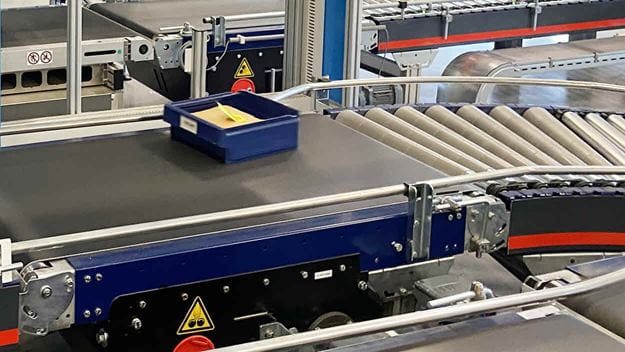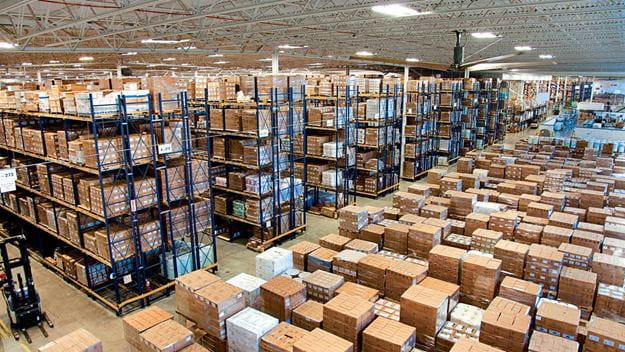
June 2022 - By Ronald Poort, Executive Vice President, DSV
Ronald Poort is the Chief Commercial Officer of DSV’s Solutions division, leading the strategic development for the 7.5 million square meters of warehousing across the DSV network. Ronald has over 30 years of supply chain experience and has been with DSV for 16 years.
Traditionally, warehouse automation has been considered an anathema to supply chain flexibility and resilience. But by rethinking how warehouse automation offerings are shaped and provided, I believe it is time to rethink this misconception.
Despite the increased need for flexibility and fast-changing markets, the demand for warehouse automation is on the rise
Ronald Poort
Today, we can bring warehouse automation and increased flexibility to businesses and support their growth– even during these disruptive and Covid-19 impacted years.
The rate of change in global supply chains has never been faster. The rapid growth of e-commerce, new technologies, huge fluctuations in energy prices, and increasing labor shortages combined are forcing companies to rethink and redesign their global supply chains. And this was happening even before business leaders had to worry about global pandemics, container shortages and the urgent need to transition to new environmentally sustainable and circular supply chains.
In such a fast-changing environment, it is no wonder that business leaders are increasingly looking for ways to ensure that their global supply chains remain flexible, resilient, and cost-competitive. Traditionally, automation, and particularly warehouse automation, has been considered a capital-intensive investment and one that runs counter to supply chain flexibility and resilience.
So how can businesses keep their supply chains flexible, when warehouse automation generally relies on large, fixed, capital investments, often with pay-back periods of more than 5-years? Before investing in warehouse automation, businesses need to be confident that their product dimensions, product mix, order profile and market demand will not significantly change beyond the parameters of the automation technology selected. Such confidence was rare in the past, but in the fast-changing, volatile markets of today, it is almost unthinkable to find a business that can be confident of its business requirements five years from now.
All of this raises the question of whether businesses that want resilient and flexible supply chains should invest in warehouse automation or avoid it?
Ronald Poort
Despite the increased need for flexibility and fast-changing markets, the demand for warehouse automation is on the rise. A report published by Forbes declared that “automation is the future of warehousing”, and citedresearch that 96 pct. of survey respondents had indicated that they expected warehouse automation to increase over the next 3 years. According to the research, the increased demand for warehouse automation was driven by increasing labour costs, labour shortages, and increased throughput requirements as well as changes on the supply side, such as advancements in automation technology, lower costs and higher potential for scalability.
Recent research carried out by members of the PARC Institute at Cardiff University, and presented at the International Symposium of Logistics found that 70 pct. of respondents believed that warehouse automation does make supply chains more resilient. But, concerns remain, with many respondents worrying that automation increases operational complexity and reduces the ability of warehouses to flexibly respond to peaks in demand.
All of this raises the question of whether businesses that want resilient and flexible supply chains should invest in warehouse automation or avoid it?
.jpg?rev=-1&w=481)
When we talk to our customers, they recognize the need to make use of warehouse automation to remain competitive. Despite this, many are still reluctant to invest themselves because the market is changing so quickly and investment in the wrong location or the wrong technology can become a real burden and strangle supply chain flexibility. I completely understand their anxiety which is something we want to resolve.
Businesses no longer need to worry about the trade-offs between warehouse automation and supply chain flexibility, with investments in multi-user networks like DSV Fulfilment Factories, they can actually have both.
Ronald Poort
At DSV, we recently announced a multi-million-dollar investment in 20 new, large scale automated warehouses across the globe to create a global network of DSV Fulfilment Factories. With these Fulfilment Factories, DSV provides access to the latest warehouse automation technologies and does so in a way that allows our customers to maintain much-needed flexibility.
With the DSV Fulfilment Factories, we can now offer our customers a reliable, cost-efficient and flexible warehouse automation solution. Our customers don’t need to worry about selecting the right technology or tying up their capital, we have solved that problem for them and already made the upfront investment to create a large network of automated fulfilment factories. The benefits are obvious, our customers can plug directly into the DSV Fulfilment Factories, take out extra capacity when they need it, reduce it when they don’t, or move capacity to different geographies as demand changes.
That is why I come to this conclusion.
Businesses no longer need to worry about the trade-offs between warehouse automation and supply chain flexibility, with investments in multi-user networks like DSV Fulfilment Factories, they can actually have both.
Learn more
-

Warehouse Automation
Optimise your current warehouse setup with our automated warehouse systemLearn how you can optimise your warehouse setup -

Warehousing
Get more space or outsource all your warehousingRead how to get the warehouse flexibility you need
Any questions?
Our experts are ready to help. Get in touch and we'll find the solution you need.




